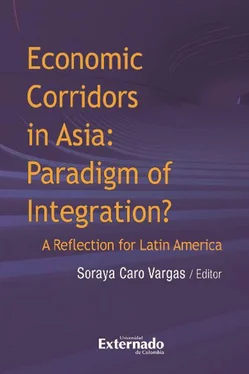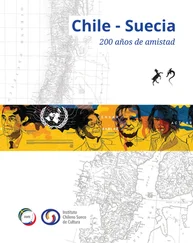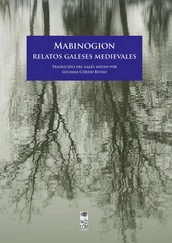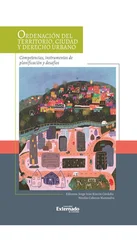FIGURE 1: THE SAGARMALA PROJECT

Source: (Ministry of Surface Transport and Shipping website, n.d.)
In order to complete the spectrum of connectivity and economic corridors, India has also planned for the inland waterways project given the fact that India has multiple river crises across the entire country. With the exception of a few states, the river water is expected to be used for the inland waterways and cargo shipping.
4. RIVER INTERLINKING PLAN AND PROMOTION OF INLAND WATERWAYS
As was discussed in the earlier section, for better port connections, India has also laid out a plan for interlinking rivers and promoting inland water ways. As part of this initiative ‘the Cabinet Committee on Economic Affairs, chaired by the Prime Minister, Shri Narendra Modi, had given its approval for the implementation of the Waterways development project which is known as Jal Marg Vikas Project (JMVP) for capacity augmentation of navigation on National Waterway-1 (NW-1) at a cost of Rs 536.918 million rupees with the technical assistance and investment support of the World Bank’ ( Press Information Bureau, 2018). The multi-modal terminals are being built as part of the central government’s ‘Jal Marg Vikas Project (JMVP) that aims to develop the stretch of the river Ganga between Varanasi and Haldia for navigation of large vessels weighing up to 1,500-2,000 tonnes. The JMVP entails construction of three multi-modal terminals (Varanasi, Sahibganj and Haldia); two inter-modal terminals; five roll on-roll off terminal pairs; new navigation lock at Farakka; assured depth dredging; integrated vessel repair’( The Economic Times, 2018).
Meanwhile, India has been working on integrating the national economic corridors and also creating a network of industrial cities, smart cities and also select export promotion zones. These initiatives have been complemented with initiatives which are sub-regional in character. The purpose is to integrate the Indian economy and also promote services and manufacturing with dedicated planning for certain sectors in select areas. Furthermore, a river linking plan is also expected to address issues related to potable water, irrigation and maintaining the water table across the country, as a means of addressing challenges related to floods and drought. However, the inland waterways project faces challenges in terms of the development of terminals, low water flow in certain dry seasons leading to difficulty in navigation and additional costs in terms of dredging and cleaning the waterways from encroachments along the riverbed.
FIGURE 2: THE HIMALAYAN AND PENINSULAR COMPONENTS OF NRLP PROJECT

Source: ( Prabhu, 2014)
While these initiatives have in a way created a roadmap for infrastructure development in the country, the major issue is regarding the implementation and time bound development of the adjoining areas. However, with the integration at the national level, the dividends can be reaped through sub-regional connectivity.
5. CONNECTING WITH NEIGHBORHOOD AND SUB-REGIONAL NETWORKS
For India, the experience of developing an integrative production center within South Asia has been met with strategic and security constraints with particular focus on Pakistan 6. Due to the spurt of terrorism infused through Pakistan and also concerns regarding limited trade possibilities with Pakistan, India started focusing on its eastern periphery and started working with the Southeast Asian countries particularly Thailand and Myanmar. This gave birth to a few economic initiatives which have been embedded under the trilateral highway, Mekong India Economic Corridor (MIEC) and now proposals are also being considered with regard to the Indo-Pacific corridor which is a work in process which would integrate different sub regional initiatives under the nomenclature of Indo-Pacific Economic Corridor.
6. TRILATERAL HIGHWAY NETWORKS-MYANMAR-INDIA- THAILAND
The proposed 1,360 km long trilateral highway envisaged in the year 2003 has been slow but the project would connect Myanmar, India and Thailand through the towns of Moreh, India with Mae Sot, Thailand via Myanmar to boost trade and commerce under the coverage of the ASEAN-India Free Trade Area ( The Hindu Business Line, 2018). This project has been nearly completed with few road sections and bridges needing to be completed, those different sections of the roads are now being completed with India’s financial assistance and support from international financial institutions. The major challenge for this trilateral highway network has been the movement of road building equipment and the problems in the topography and terrain.
‘With the financial constraints faced by the other two countries –Myanmar and Thailand, India is undertaking construction of two sections of the Trilateral Highway in Myanmar namely,
1. Construction of 120.74 KM Kalewa-Yagyi road section, and
2. Construction of 69 bridges along with the approach road on the 149.70 KM Tamu-Kyigone-Kalewa (TKK) road section’ ( insightsonindia.com, 2019).
The construction of these sections has been given on the basis of engineering, procurement and construction modes in May 2018 for the Kalewa-Yagyi section, and November 2017 for the TKK section. It is expected that by 2020 the two sections will be completed and thereby connecting India with the production centers of these two countries. The genesis of the Mekong India Economic Corridor is based on the larger foundation of this trilateral Highway ( insightsonindia.com, 2019). The estimated cost of the projects are 145.929 million Rupees for the Kalewa-Yagyi road project and Rs. 37.158 million for the 69 Bridges on the TKK road project ( Rajya Sabha, 2018). The trilateral highway project is also critical for the Mekong India Economic Corridor as it would connect regional value chains existing in Myanmar and Thailand with Indian production centers spread across the country.
7. MEKONG INDIA ECONOMIC CORRIDOR (MIEC)
MIEC germinated out of the concept of Mekong Ganga Economic Cooperation, an initiative which launched in 1997 to connect India through trade and cultural networks with its eastern seaboard. With India’s increasing economic clout and the desire to underplay the increasing Chinese dominance in the region, India worked out a start to engage these countries with the objective of sustaining the cultural and historical interaction with a complementary dose of trade and investment. The development of the Kaladaan Multi Modal Transport Project (a project with integration of riverine and highway transport) and the development of a trilateral highway were built on the premise that the two projects would enhance trade and investment between India’s northeast region and the countries of mainland Southeast Asia. However, the two projects took more than 15 years to get completed with parts of the two projects still in limbo. Mekong-India connectivity has been envisaged as a constituent of India’s obligations under the Asian Highway Network. Additionally, the possibility of the United Nations Economic and Social Commission for Asia and the Pacific (UNESCAP) sponsored Trans-Asian Railways might take shape in the near future once the Asian Highway is completed. MIEC would help in connecting India manufacturing with the ancillary industries in the Cambodia, Laos, Myanmar and Vietnam (CLMV) region as well as those in Thailand. This corridor also fits into the Indo-Pacific corridor envisioned by the US government. Indo-Pacific construct works to the benefit of both India and these select countries as Indo-Pacific corridor connects the two regions - South and Southeast Asia together.
Читать дальше














